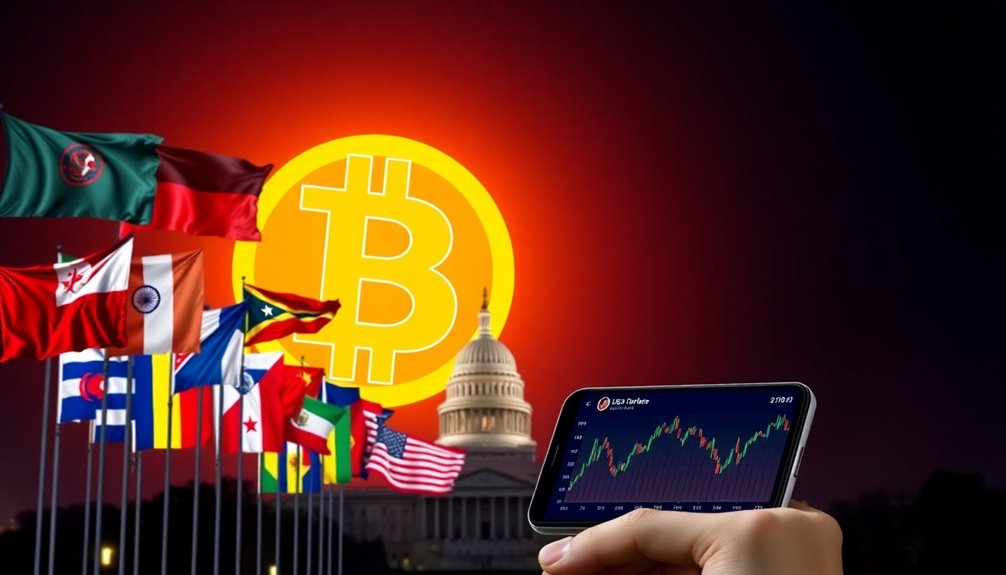As sixteen states push forward with Bitcoin investment legislation, you might wonder how the U.S. government plans to respond. This growing momentum at the state level could signal a significant shift in how digital assets are viewed. If these initiatives prove successful, the federal government may find itself under pressure to craft a coherent strategy. What implications could this have for the future of cryptocurrency regulation in America?

As the U.S. government navigates the complex landscape of cryptocurrencies, it finds itself both a significant player and a cautious observer in the world of Bitcoin. You might find it interesting that the government holds a considerable stash of bitcoins, primarily seized in criminal cases. These holdings are often auctioned off through the U.S. Marshals Service, but criticism arises when they sell at unfavorable prices due to market volatility. With the exact amount of bitcoins held shrouded in mystery, it's clear that the U.S. government is one of the largest holders of bitcoins.
Meanwhile, the legislative landscape is shifting. Senator Cynthia Lummis has introduced a bill to establish a U.S. bitcoin reserve, proposing that the government buy significant amounts of Bitcoin annually. This initiative aims to bolster national finances, possibly helping to pay off the national debt. However, skepticism surrounds the idea due to Bitcoin's notorious volatility and the complexities of funding models.
Additionally, the Trump administration has shown support for creating a national digital asset stockpile, which could include these seized cryptocurrencies.
At the state level, sixteen states are taking a more proactive approach, considering legislation to invest in digital assets, including Bitcoin. Arizona and Utah are leading the charge, aiming to establish state-level bitcoin reserves. This trend reflects a growing institutional acceptance of cryptocurrencies, as states look to diversify their investment portfolios and capitalize on digital asset potential.
You might note that some states have already dipped their toes into crypto ETFs, signaling a readiness to embrace this new asset class.
Regulation remains a crucial element of this evolving landscape, with the U.S. government grappling with the challenges of defining cryptocurrencies' legal status. The SEC and CFTC have conflicting views on treating crypto as either a security or a commodity, adding to the regulatory confusion.
The Trump administration has sought to provide clarity and support for the crypto industry, though proposals for a U.S. Central Bank Digital Currency have been shelved.
As states push forward with their initiatives, the federal government risks trailing in the crypto race. If state-level investments yield positive results, it could create pressure for the federal government to adapt quickly or risk being left behind in the digital asset revolution.
As you follow these developments, the interplay between state actions and federal responses will shape the future of Bitcoin and the broader crypto landscape in the U.S.









